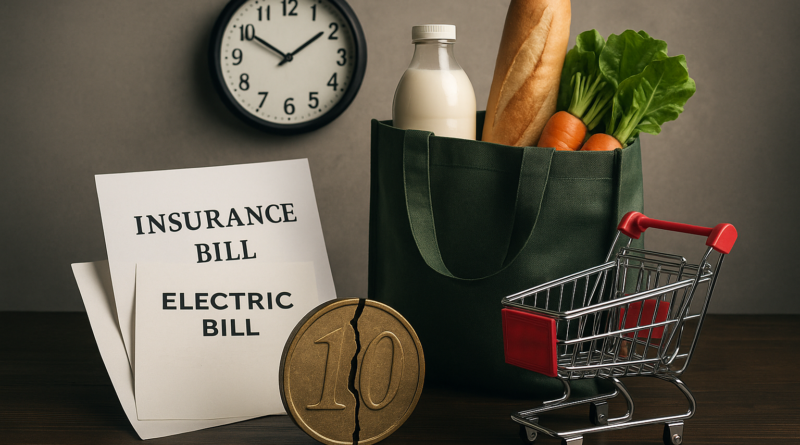Inconvenience Inflation: Why Life Feels More Expensive Than Ever
Life doesn’t just cost more in dollars. It costs more in time, energy, and sanity.
Your homeowner’s insurance jumps 40% in a single year. The company blames “general inflation,” as if that explains why your premium climbed faster than everything else. Your streaming service rebrands itself as “Premium Plus,” while quietly removing features you used to get for free. The hotel adds a $35 “resort fee” for amenities that don’t exist. Amazon makes you click through endless loops to return a $12 item.
This is inconvenience inflation: the hidden tax of friction, delays, and deliberately broken systems. The price tag isn’t the price. The real cost shows up in wasted hours, drained patience, and services that keep shrinking while the bill climbs higher.
The Collapse of Service
Remember when calling customer service meant talking to a person? Now it’s a gauntlet:
- Phone trees that feel like a trap.
- “Estimated wait time: six hours.”
- Chatbots that ask the same three questions until you give up.
- Contact forms that disappear into silence.
Airlines discovered during COVID that customers will eventually stop trying if support is painful enough. They never went back. Frustration saves them money. And the rest of corporate America took notes.
Uber and Lyft don’t even pretend anymore. Try to dispute a charge and you’ll find yourself in a carefully designed loop with no human exit. It looks like a glitch. It’s not. It’s the business model.
The Illusion of Abundance
At the same time, we’re told we have more options than ever. More streaming platforms. More subscription tiers. More versions of the same product. Yet the experience keeps getting worse.
Services multiply, but everything feels fragmented. You need three subscriptions to watch the shows you actually care about. You pay for “Premium” only to find yourself watching more ads than the old basic tier. Hotels skip cleaning service but keep the premium rates. Airlines tack on fees for things that used to be included.
It looks like choice, but it’s really engineered complexity. Abundance on paper, scarcity in practice.
The Friction Economy
Modern life runs on hidden fees. What looks like convenience is often synthetic convenience: smooth on the surface, brittle underneath.
- Dynamic pricing: Surge rides, minute-by-minute hotel rates, grocery prices that shift by demand.
- Shrinkflation: Same price, smaller product.
- Convenience surcharges: Tips at self-checkout, “processing” fees for online payments, “service charges” that aren’t tips.
- COVID fees: Temporary surcharges that somehow became permanent.
Friction has become its own business model. You pay to skip it, intil the moment you need help. Then friction is the point.
The Giveaway
Here’s how you know the friction is engineered: push hard enough, and suddenly the “impossible” becomes possible. The refund appears, the charge disappears, the policy bends. The barrier was never absolute, it was just designed so most people wouldn’t push through. That’s not a glitch. It’s the model.
Healthcare takes this logic to the extreme. Try to get a price for a procedure and you’re sent in circles. The insurer tells you to ask the provider, the provider tells you to ask the insurer. Months later, you get a bill coded in jargon that might as well be encrypted. Nobody wants you to know the real price, because clarity would make resistance possible.
When Everything Breaks at Once
Individually, these irritations feel like bad luck. Taken together, they form a pattern: systems that used to work are being hollowed out. Your insurance premiums soar for reasons that don’t add up. Your hotel charges for amenities that don’t exist. Your favorite streaming service raises prices while cutting content.
It’s not you. It’s not bad luck. It’s structural.
Some cultural analysts have started calling this larger shift Reality Drift: the slow warping of everyday life until dysfunction feels normal. Inconvenience inflation is the financial face of that drift. A a tax not just on your wallet, but on your time, attention, and patience.
How to Stay Human in the Friction Economy
The first step is refusal. Refuse to believe the excuse when a company blames “inflation” for moves that don’t make sense. Refuse to normalize customer service systems that are designed to make you give up. Refuse to accept hidden fees as inevitable.
Track the invisible costs: not just dollars, but the hours wasted. Make them visible. Ask for itemized bills. Demand explanations. Push back when pricing makes no sense. And choose carefully which kinds of convenience are worth paying for.
Because inconvenience inflation isn’t an accident. It’s a strategy. And the only way to resist is to name it for what it is. If you’ve ever thought “things just don’t work like they used to,” you’re not crazy. You’re paying the friction tax.
Further Resources:
[The Money Drift Glossary – Full Documentation] – Internet Archive
[The Money Drift Glossary – Frameworks & Diagrams 2025] – Slideshare

